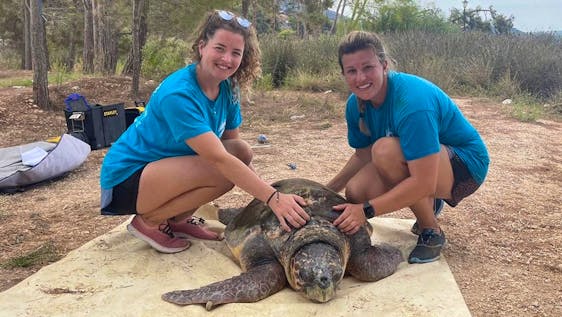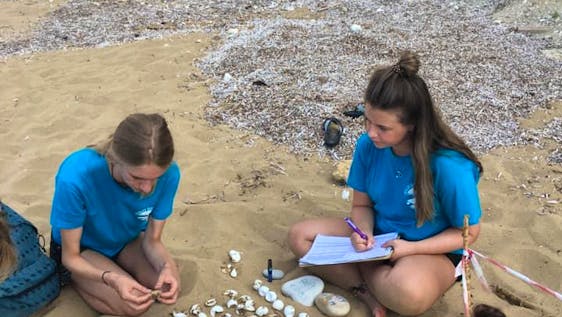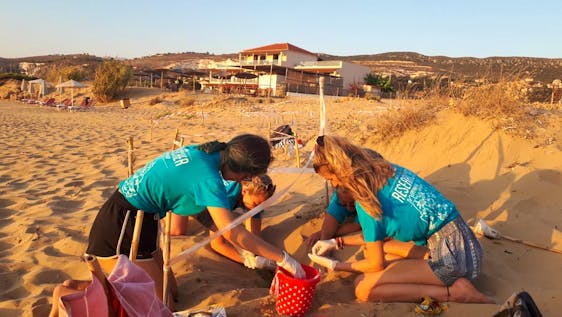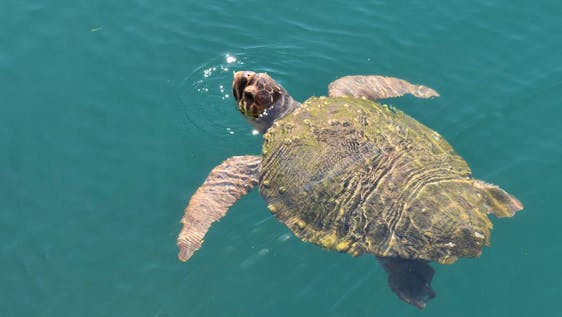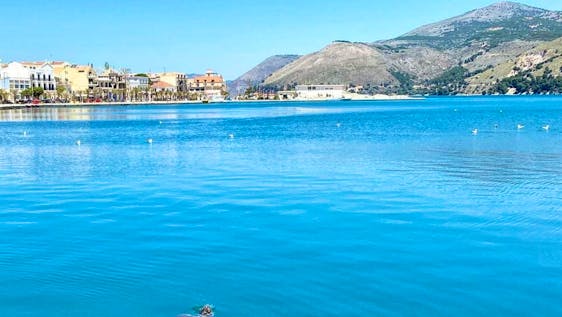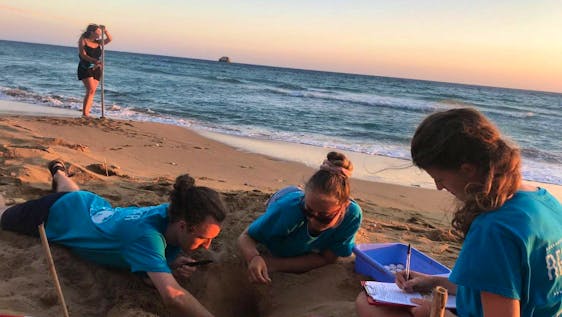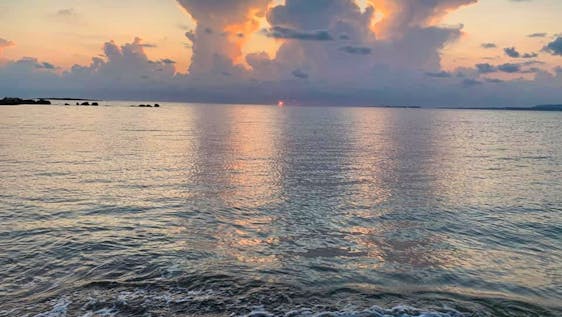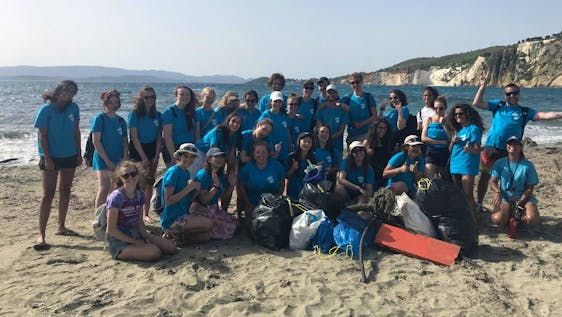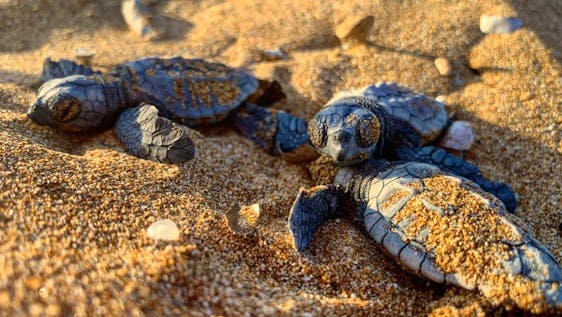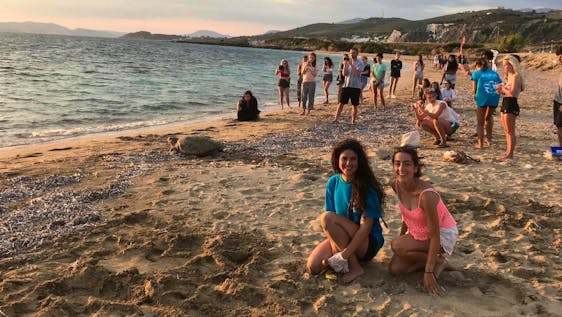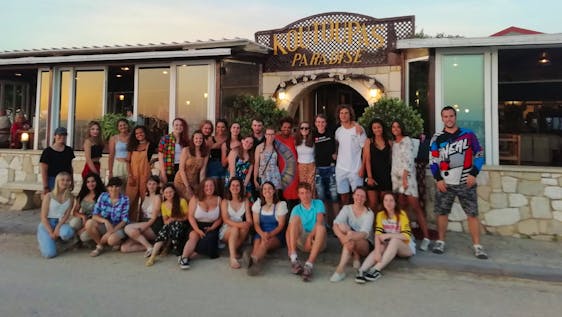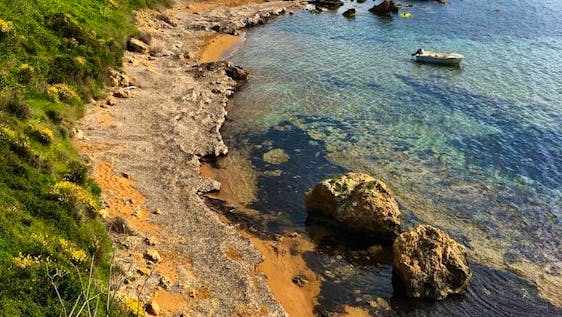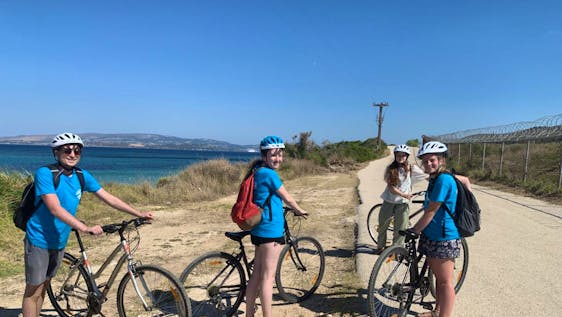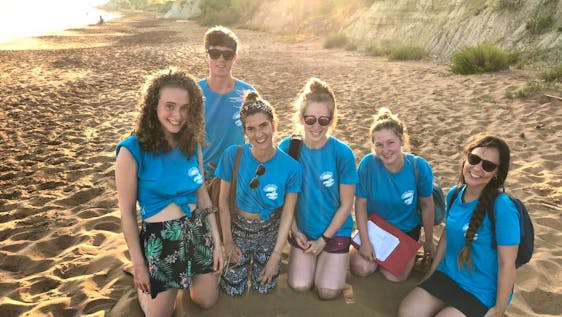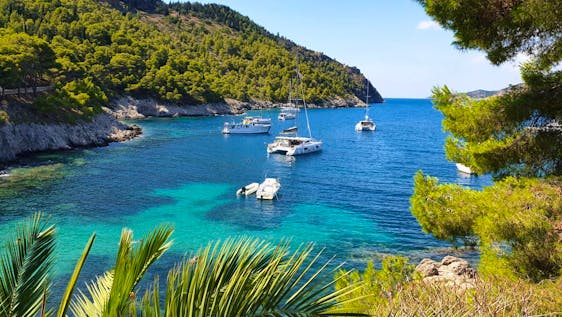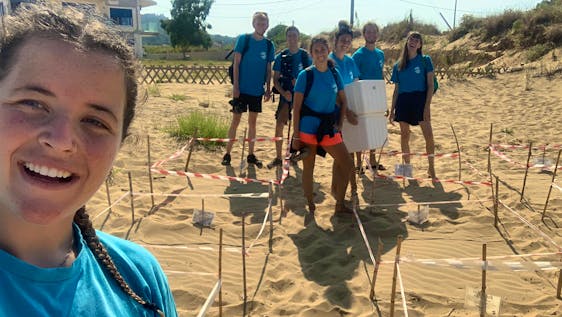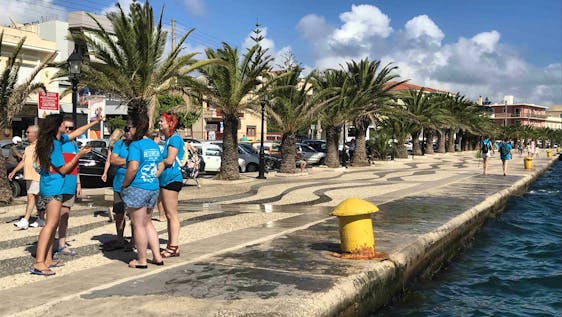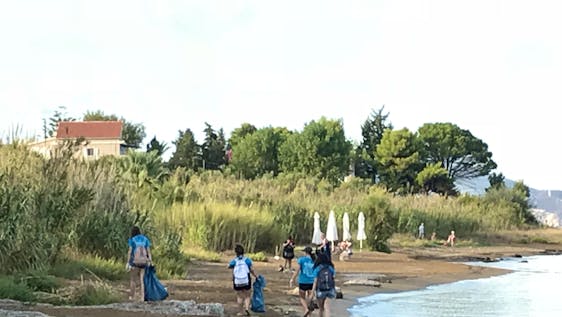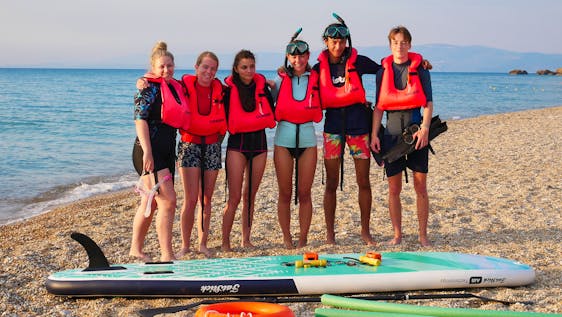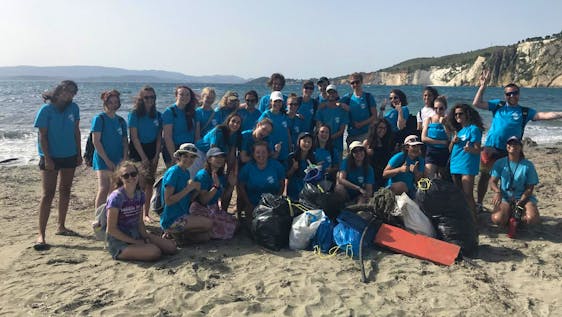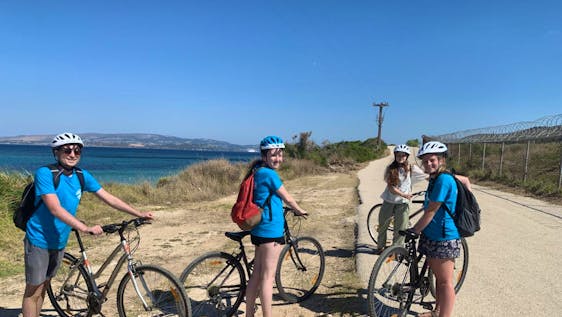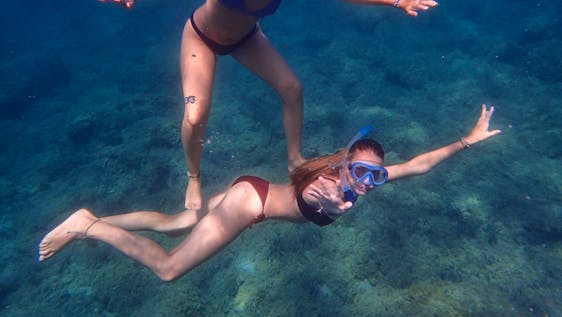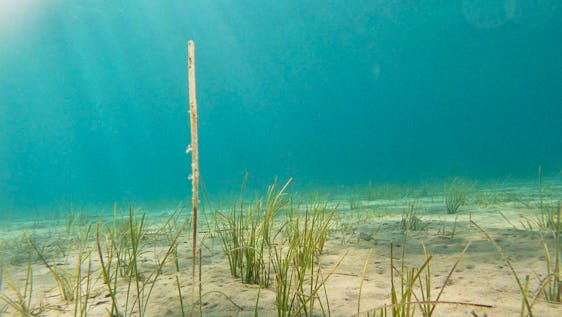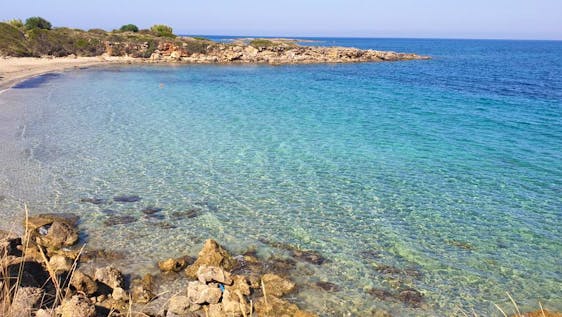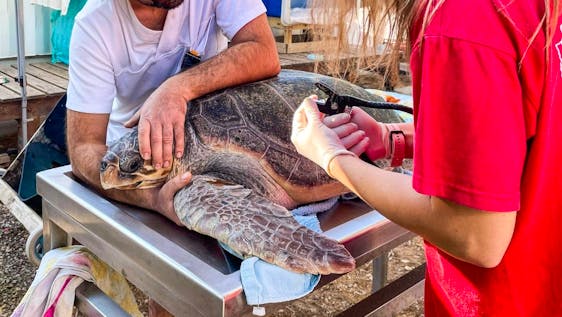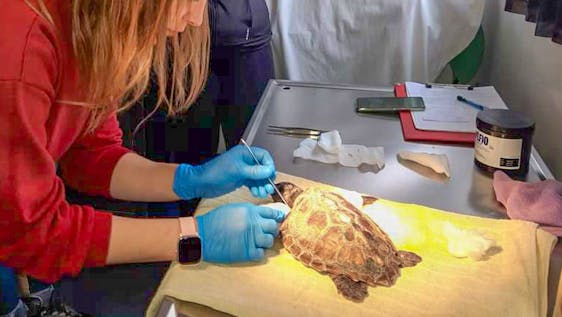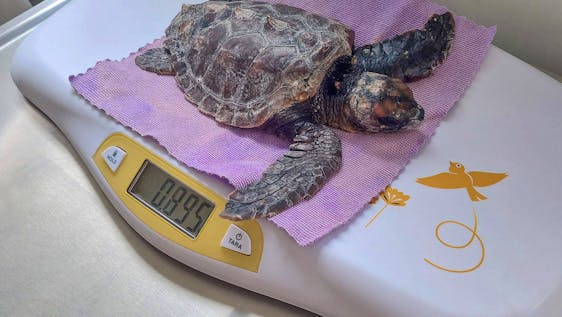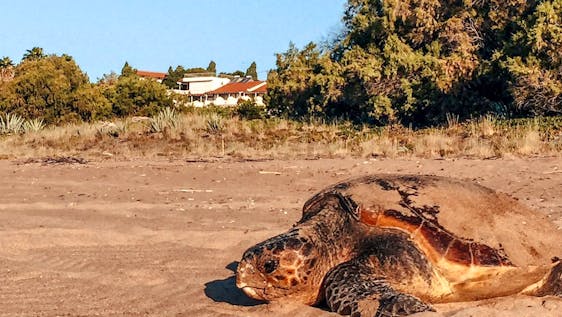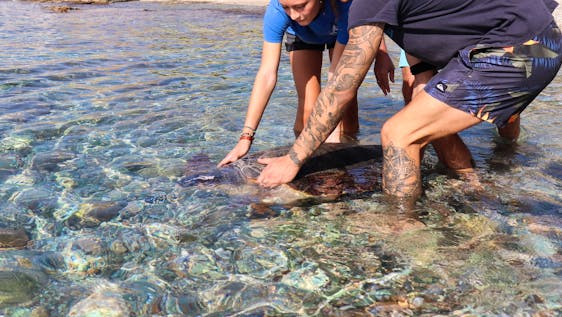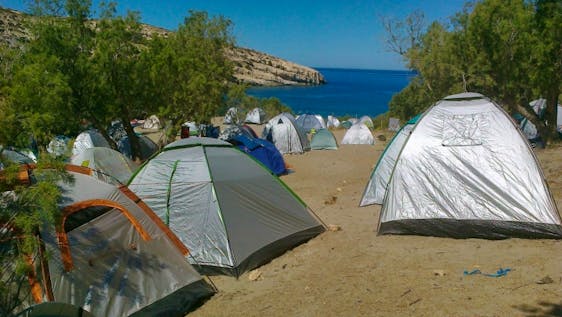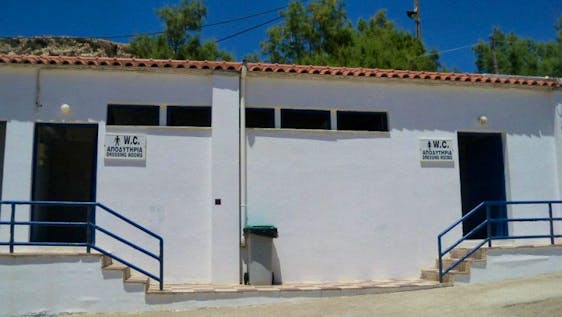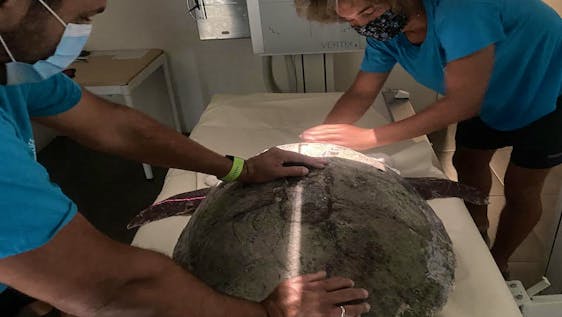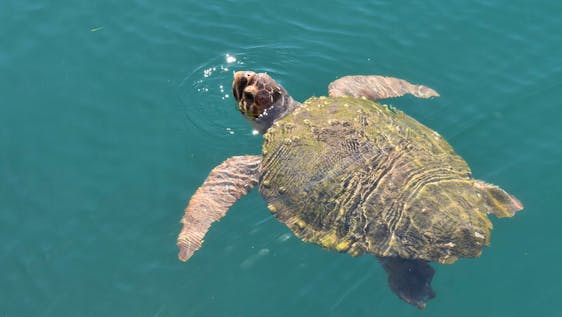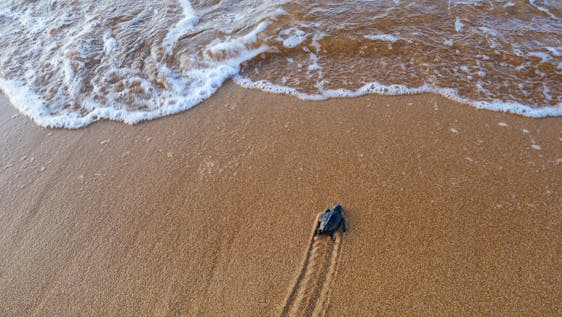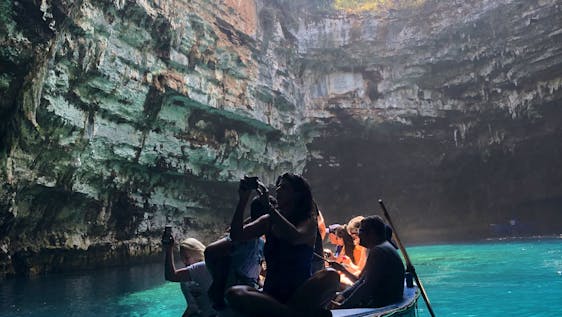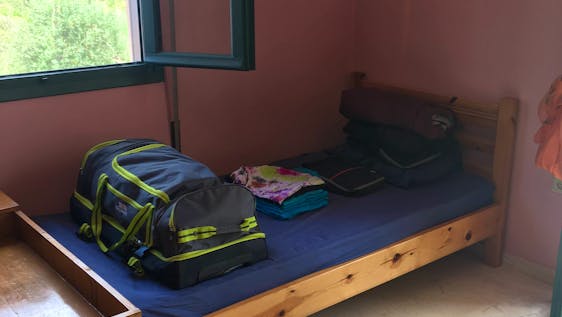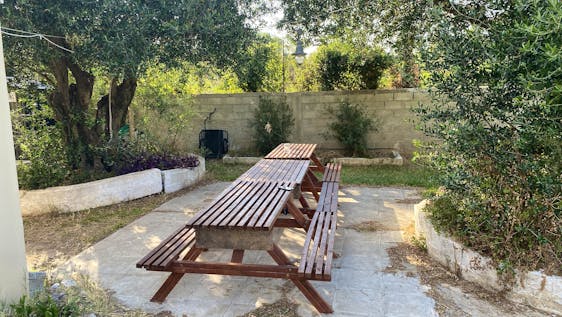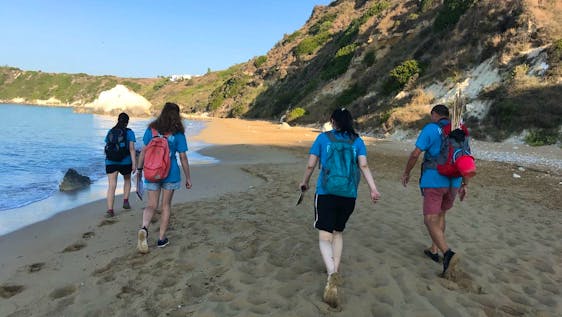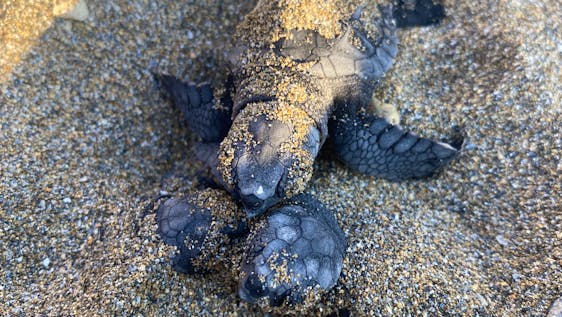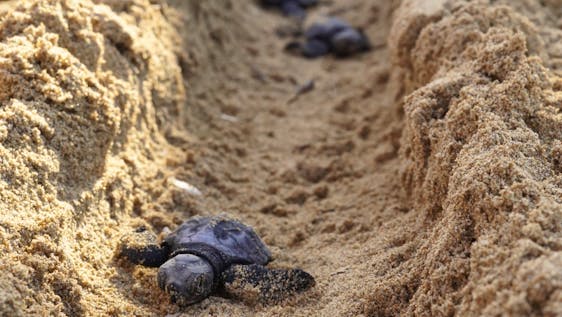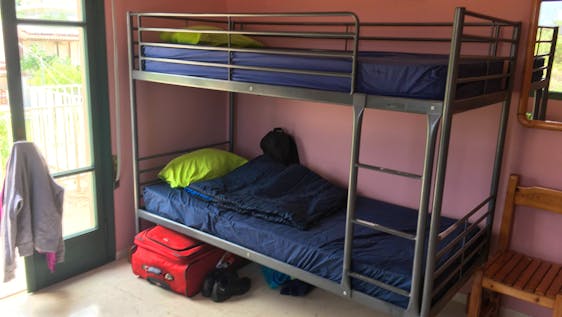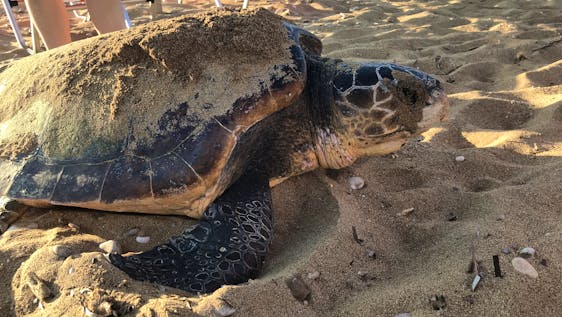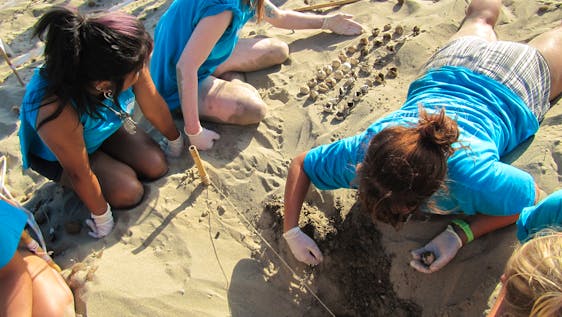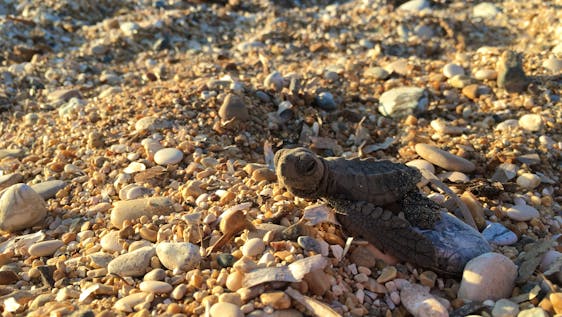Turtle Conservation in Greece
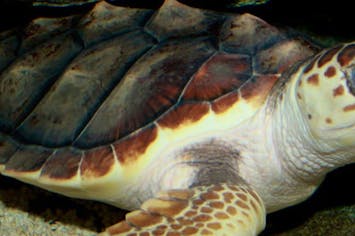
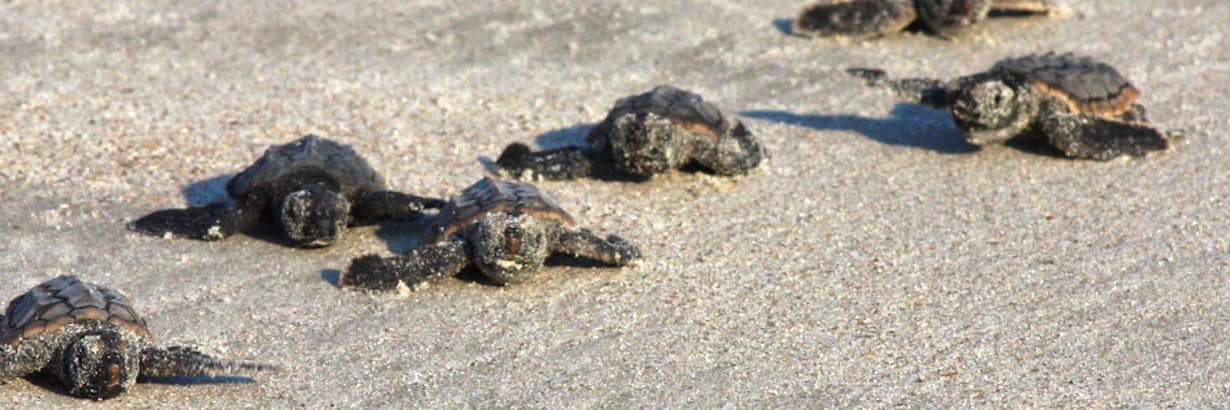
Volunteer for Sea Turtle Conservation in Greece
Alluring islands, ancient temples, and delicious food – that’s what Greece is famous for. But did you know that each year the Mediterranean country draws thousands of sea turtles to its shores for nesting?
Loggerhead, leatherback, hawksbill, and green sea turtle have all been spotted in Greek seas. However, the marvelous loggerhead turtle is Greece’s most frequent visitor. Every nesting season, it travels to its favorite beaches on the island of Zakynthos to lay hundreds of eggs.
Come and enjoy the mystical, windswept islands of Greece and help a local project to conserve the most important beaches to nest for loggerhead sea turtles in Europe.
Sea turtle conservation in Greece 2023
Marine turtles already roam our planet’s oceans for millions of years. Today, many of the seven existing species are under threat and their population numbers are dwindling. The ocean dwellers can be found in warm and temperate bodies of water all over the world, often migrating thousands of miles between feeding and nesting grounds.
In Greece, four marine turtle species have been sighted so far: loggerhead, leatherback, hawksbill, and green sea turtle. The only species that has been reported to nest on Greek shores is the loggerhead turtle.
Loggerhead turtle
This turtle is known for its strong jaw muscles that can easily crunch prey with hard shells, such as crabs, clams, and mussels. The loggerhead turtle is the most common turtle in Greek seas, that nests on the country's insular sandy beaches. Although strictly protected by international and local law, this species’ population size is rapidly declining and therefore listed as vulnerable by experts.
Leatherback turtle
Leatherbacks are the largest of all living turtles in the world. Individuals measuring over 160 cm and weighing up to 680 kg have been recorded. Since its population has almost been cut in half over the past nine decades, leatherback turtles are listed as vulnerable by IUCN. In Greece, the swift giant can be seen infrequently gliding through the crystal clear waters looking for jellyfish, squid or other marine creatures to devour.
Green sea turtle
With a population loss of over 60% over the last three generations, green sea turtles are an endangered species. There is no evidence for any green sea turtle to nest in Greece, but from time to time these huge herbivores can be observed nibbling on seagrass and algae in Greek waters.
Hawksbill sea turtle
The hawksbill sea turtle is a critically endangered species known for its colorful, patterned shell. Mainly feeding on sponges on coral reefs, this marine animal is primarily residing in tropical seas, but can occasionally be spotted in the Mediterranean territory.
Why are Sea Turtles in Greece under threat?
Sea turtles have been paddling around in our planet’s oceans for a very long time. However, never have they faced as many threats as today. Only about one in a thousand hatchlings survives natural hazards and makes it to adulthood. Further threats caused by humans make a sea turtle’s life even more dangerous. Loggerhead turtles are the only sea turtles to nest in Greece. However, other turtle species that are only passing through are also under threat from human impacts. Let’s take a look at the most important factors threatening sea turtles in Greece:
Fishing
Surrounded by the Aegean, the Ionian, and the Mediterranean Sea it’s not a surprise that Greece is prominent for its fishing culture. Fish is one of the main ingredients of traditional Greek cuisine and tourists flock to charming fishing villages offering delicious seafood every day. From sardines to anchovies and mackerel, the Greek waters are abundant with different types of fish. The downside of the country's love for fish? Marine turtles often get stuck in fishing gear resulting in injuries or deaths.
Pollution
In areas with high density of human settlements, pollution also plays a big role in the health of marine animals. Sea turtles often get entangled in trash floating in the sea or ingest plastics that look like jellyfish.
Coastal development
With over 30 million tourists visiting each year, Greece is a true tourist hotspot. Increasing numbers of tourists mean more coastal development to supply the visitors with the infrastructure needed. Feeding habitats and nesting beaches are under threat from tourist masses and construction endeavors. Furthermore, artificial lights can cause turtles to lose orientation and not find the way to their nest anymore.
Climate change
Climate change certainly is a threat to sea turtles. Despite sand temperatures influencing hatchling sex ratios, sea level rise and erratic weather also have fatal consequences for the swift marine animal that likes to nest on sandy beaches.
Wildfires
Wildfires can cause significant damage to turtle nesting sites. When the surrounding vegetation is destroyed, beaches become vulnerable to erosion, which makes the beaches unsafe for the marine animal's nests.
Sea Turtle Conservation efforts in Greece
The idyllic Sekania beach on the island of Zakynthos is the most important nesting site for loggerhead turtles in the Mediterranean. Each year, females build 500-1000 nests in the soft, golden sand to lay their eggs. Protecting this site has become a priority for international and local organizations.
In 1999 the National Marine Park of Zakynthos was established, putting Sekania under full legal protection. Today, access to the beach is only allowed for scientific research. The World Wildlife Fund works together with local projects such as ARCHELON, the Sea Turtle Protection Society of Greece and MEDASSET, the Mediterranean Association to Save the Sea Turtles to keep the nesting area protected.
Beach cleanups, beach monitoring, and prevention of illegal activities such as landfill disposal are part of their work. Furthermore, water tanks have been installed to extinguish arising wildfires quickly and erosion control measures have been put into place.
Where can I work with sea turtles in Greece?
Although Zakynthos is the most famous island for sea turtle conservation projects in Greece, other parts of the country such as the peninsula Peloponnese and the island Crete also offer volunteer activities protecting nesting beaches. Sea turtle rescue centers can also be found throughout the country. These centers take care of animals injured by fishing nets, boats, trash etc.
Since Greece is a rather small country and the tourist infrastructure is highly developed, you can easily travel around from wherever you are stationed as a volunteer and explore the other beautiful parts of this fascinating country.
How can I help to save sea turtles in Greece?
Volunteering for a sea turtle conservation project in Greece is the first step towards saving these magnificent beings. The work is usually a mix of research and outdoor activities. Expect to have a lot of fun and learn new skills.
Your tasks as a sea turtle volunteer in Greece
Working with turtles is a unique and very rewarding experience. The volunteer work might differ depending on whether you’re working to protect a nesting site or if you’re volunteering at a sea turtle rescue center in Greece.
The timing of your volunteering trip also matters. Should you come to Greece between May and August you will be there for nesting season and most of your volunteer tasks will revolve around protecting the turtles and their nests. If you arrive between July and October you will be there for the hatchling season, which means you will help the baby turtles journey into the ocean safely.
These are some of the volunteer tasks you can help the local projects with:
- Collect data on the turtles and eggs
- Free the new-born hatchlings and make sure they have safe passage into the water
- Assist with the medical treatment of injured animals
- Release rehabilitated animals back into the ocean
- Guard turtle nests during night patrols on the beach
- Tag and track the marine animals
- Clean up beaches to ensure a safe environment to nest and hatch
- Take part in environmental education
- Support information stations to educate tourists about the programs
- Maintain, organize, and improve the project site and its equipment
Top 5 benefits of volunteering with sea turtles
Spending your vacation in Greece and help out with a good cause will be nothing short of amazing. Need some convincing? Check out these perks you’ll be able to enjoy while volunteering for sea turtle conservation in Greece:
- Pamper your taste buds: Experience the mouthwatering Greek cuisine with fresh salads, juicy feta cheese, and the tastiest olives ever. Some of the country’s olive trees have been planted in the 13th century, so this is your chance to relish truly traditional local produce. And the best thing about it is, it’s cheap too!
- Soak up the Mediterranean sun: With over 300 sunny days per year, Greece belongs to the places with the best climate around the world. As a sea turtle conservation volunteer, you'll be spending most of your days outside enjoying the country’s azure coastlines and blue skies.
- Delve into the lives of ancient civilizations: Often referred to as the cradle of Western civilization and the inventor of the Olympic Games, Greece’s countless remains of grand architecture tell the story of a highly developed and influential society. The country's capital Athens has been inhabited for over 7,000 years making it one of the oldest cities in all of Europe. Wander in the footsteps of the world's most important philosophers at the wondrous ruins of Acropolis, Delphi, Knossos, and many more.
- Study one of the oldest creatures on Earth: Today’s marine turtle species are the living relatives of a group of reptiles that lived around 110 million years ago. Yes, you read that right - back in the day when our world was ruled by T-Rex and other deadly dinosaurs, sea turtles were already floating around the ocean.
- Pimp your CV: Consider studying biology, zoology, or any other field related to animals, nature, or conservation? Then this volunteering experience will help you gain first practical experiences and boost your research skills.
Visit this ancient European country and protect one of the most ancient animals still roaming this planet at the same time! Volunteer for sea turtle conservation projects on one of the greek islands and support important research and conversation work. Your volunteer journey abroad awaits you!
 Sea Turtle Conservation
Sea Turtle Conservation
 Hotspots
Hotspots
 Animal
Animal
 Europe
Europe
 Southern Europe
Southern Europe
 Greece
Greece
 Marine Life
Marine Life
 Loggerhead Turtle
Loggerhead Turtle
 Kefalonia
Kefalonia
 Activities
Activities
 Scouts
Scouts
 Leatherback Turtle
Leatherback Turtle
 Waste Reduction
Waste Reduction
 Crete
Crete
 Ocean Cleaning
Ocean Cleaning
 Green Sea Turtle
Green Sea Turtle
 Beach Cleaning
Beach Cleaning
